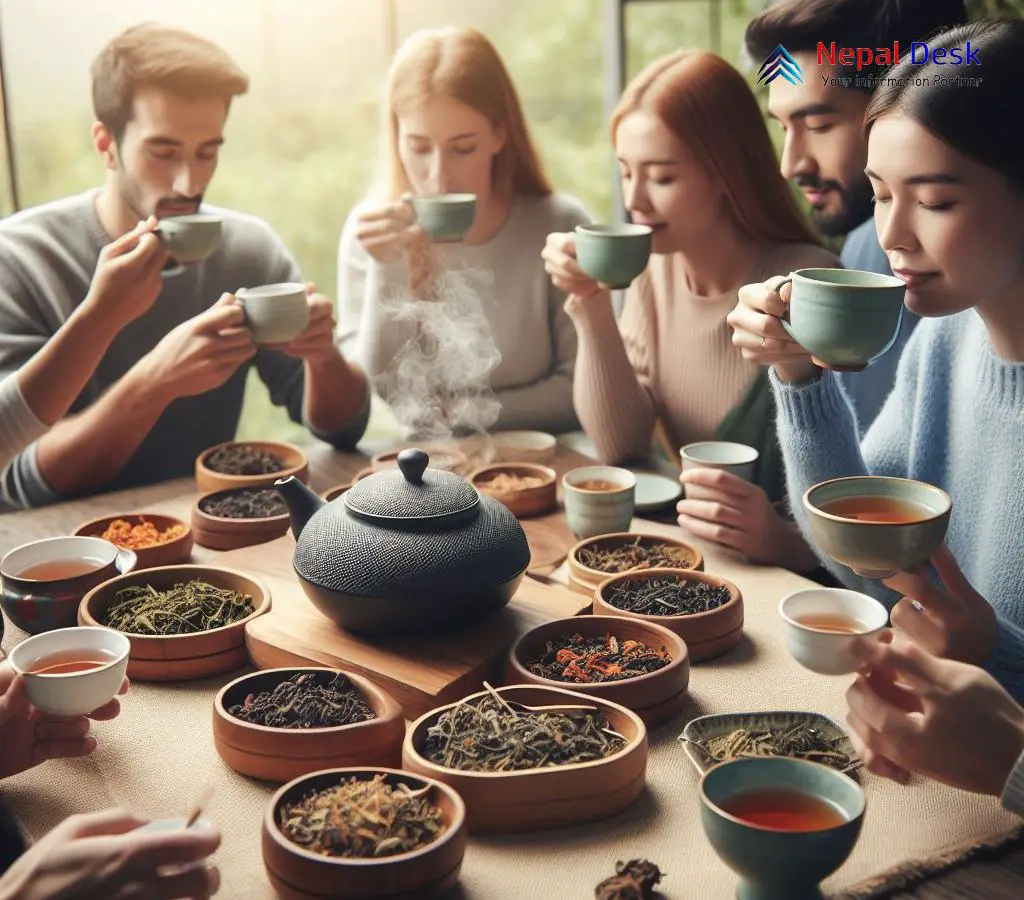Nepal's 1st Tea Tasting Event: Experiencing The Diverse Flavors
Published Date

Published Date
Discover Nepal's 1st Tea Expo, promoting diverse teas. Explore challenges & industry growth. Hosted by the National Tea and Coffee Development Board.
⏱ 4 min read
In a first in Nepal, the Nepali Tea Exhibition and Tasting Event will be organized on the 26th-27th of Magh in Chitwan. The beautiful shores of the Narayani River will play the backdrop for the display with a costly fairground-foil setup.
The National Tea and Coffee Development Board in Kathmandu spearheaded this pioneering effort to spotlight national tea under the banner: “ Support Nepali tea manufactured in the country, be healthy, wealthy, and self-reliant. ” The involvement of the board is essential to creating this showcase which is designed to increase regional tea and coffee consumption in Nepal. At this point, Mr. Chandra Puri, Agriculture Development Officer of the Board underscored rigorous planning initiatives and emphasized the anticipated massive public involvement. This exhibition also promises the exclusive privilege of tasting different varieties of tea and be educated on several manners in which people consume the product.
The event will be formally inaugurated at 10 AM by the Hon. Minister of Agriculture and Livestock Development Dr. Bedhuram Bhusal. Before this ceremony, starting at 7 AM there will be a market tour of Narayangarh and the main event will start at 10 AM till 7 PM. Free entry is available to guests to explore the melody of tastes. The Executive Director of the Board Dr. Bishnu Prasad Bhattarai shed light on the event’s objectives which include strengthening tea culture in Nepal and making people realise the benefits of drinking domestic teas correctly.
This exhibition is a collaborative effort by various institutions in Chitwan such as the Industry and Commerce Association, and Hotel Business Association plus a sea of tea-focused groups that receive impetuous reinforcement from Bharatpur Metropolitan City.
Marking a nationwide debut, this exhibition features an array of teas from prominent Nepalese districts such as Jhapa and Ilam to those from western areas. Esteemed private-sector authorities involved with Nepal's tea production and sales are set to participate; including, but not limited to, Nepal Tea Association, Himalayan Orthodox Tea Producers Association, Central Tea Cooperative Society, and Specialty Tea Association Nepal who will present their esteemed brands.
Nepali Tea: Growing Recognition, Potential and Challenges
The unique flavors and scents of Nepali teas are attributed to their cultivation at high altitudes with different microclimates, and hand-plucking processes as well as focusing on organic farming methods. It is those practices that sets them apart from the mass-produced varieties which are easily available and hence make them interesting to connoisseurs in search of a unique tea experience. Nepal’s tea repertoire is varied, including varieties of tea ranging from orthodox to CTC, green to white, and oolong that meet a wide range of preferences.
The foreign community has received and appreciated Nepali teas through various awards and accolades that reflect superior quality and flavor. Not only have these eminences elevated the status of Nepali teas but they also have attracted more of a global audience on them. In the homeland, the national agency known as the National Tea and Coffee Development Board (NTCDB) of Nepal continues sponsoring the industry by giving awards to tea producers and processors’ best exemplars every year.
Nepali tea is in the process of making quite a success as evidenced by its exportation to the world markets emerging strong in the most strategic markets like the United States, Europe, and other countries such as Japan and Australia. This trend proves that the demand and interest of the international market in Nepali tea products are constantly rising.
According to the official figures published by the Department of Customs, there is a significant increase in tea exports- up by 32% –during the fiscal year 2022-23; about 16,484 tonnes valued at Rs3.93 billion were exported, an impressive growth over the current fiscal year’s data. Nepal’s tea is still largely exported to India where it accounts for almost 90% of exports and half of CTC quantities in other nations such as China, Sri Lanka, USA, Australia, and parts of Europe.
Still, there are several challenges for the Nepali tea industry. Comparatively, the level of production of tea in Nepal is not huge when one considers the enormous magnitudes that are the benchmarks of such products from prominent global producers; the small-scale production of tea forces its shallowly penetrating and competitive imbalances which future negatively in international markets.
While recognition is on the rise, the gap in awareness is still prevalent among regular tea buyers of Nepali tea, especially when compared with renowned brands. It demands further brand development in addition to marketing campaigns to create prominence and availability on a global scale.
However, Nepal’s mountainous terrain and inadequate development of the infrastructure add more difficulties; all these present formidable challenges to the smooth working of processing, packaging, and distribution, which eventually impact timely delivery abroad.
